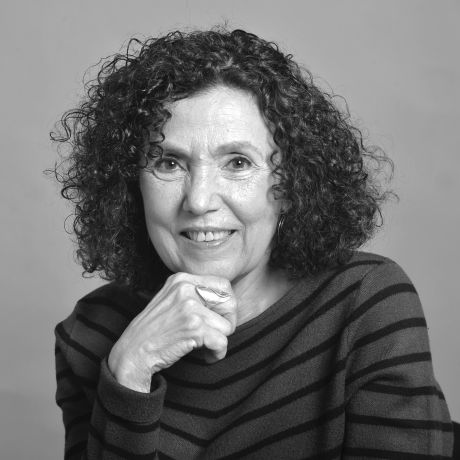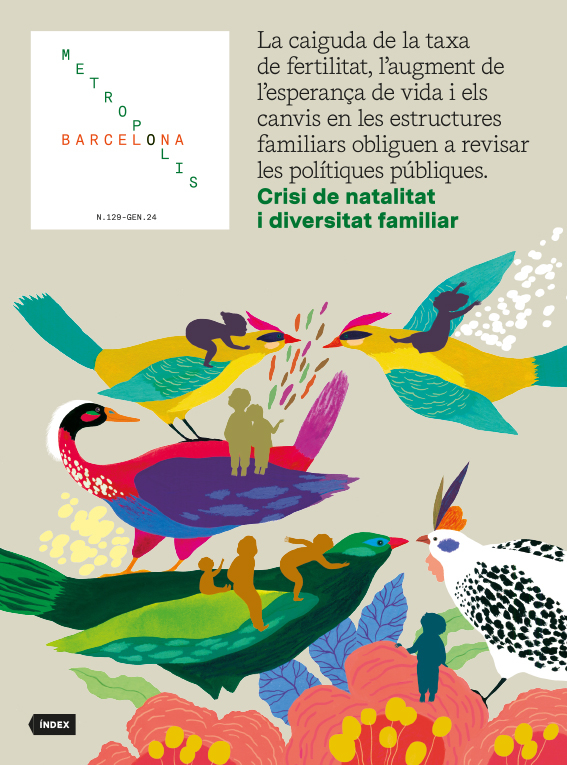When time makes its presence felt
- Books
- Culture Folder
- Jan 24
- 5 mins
Can a memoir be written in pictures? On flicking though and reading La Barcelona de Pilar Aymerich [Pilar Aymerich’s Barcelona], the answer is a categorical yes. The book invites us to take a journey through the Barcelona of the late 1960s to the 90s. It comprises 239 images in a luminous and precise black and white that convey truth. Pieces of our history that bear a strong visual impact and recall the moments experienced by the people who were there and arouse the desire to delve into the past among those who, on account of their youth or distance, were not there.
Aymerich claims to be urban, unequivocally and unreservedly, and it is in the grids of the city and in the people who pass through it that she finds the inspiration to capture the moment and turn it into an image. Her gaze reflects expression without disregarding the context, depicting the subjects in their circumstances and situating them in the space, at times scenographic, occasionally poetic or ironic, but invariably evocative, with the intention of delving a little deeper.
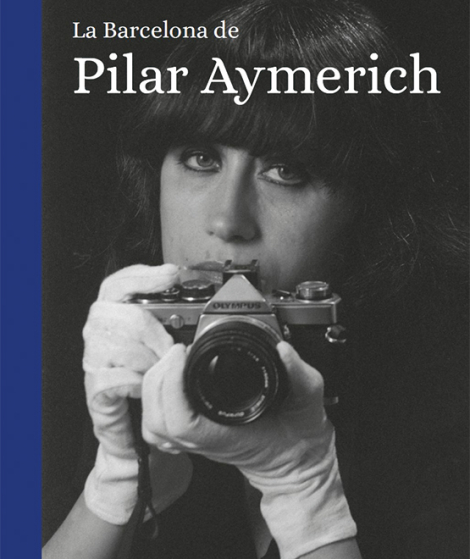 Book cover
Book coverThe book La Barcelona de Pilar Aymerich, published by Comanegra and the Barcelona City Council, is organised into various themes that illuminate places and movements in our recent history: workers’ struggles, the explosion of the most militant feminism, the resurgence of the theatre, the leading players in culture and politics, the offbeat city… It features the characters and the scenes, as well as the turbulent and impassioned moments of the transition to democracy, of the struggles to turn a dreary and repressive world into a fairer and more democratic one, moments in which the photographer engages with her camera, like another hand among those pushing and shoving. Leaving aside impossible objectivities, Aymerich takes the side dictated by reason and the heart.
Pilar Aymerich reflects expression without disregarding the context, depicting the subjects in their circumstances and situating them in the space, with the intention of delving a little deeper.
The photographs that Aymerich took during the 1970s and 80s are well known, those of the women’s movements with demonstrations or the performance of the collective Les Nyakes scrubbing the aisle of the paranymph [ceremonial hall] at the University of Barcelona during the Catalan Women’s Days; images that, like the one of the girl carrying a child on her shoulders with the sign “Jo també soc adúltera” [I’m an adulteress too], have become icons of feminism. But the piece also offers surprising stories, such as some of the transgender individuals who roamed the city’s countercultural spaces in the 1970s, or the self-management experience of La Trinitat prison, which the nuns had relinquished and where the women prisoners took over the running of the prison until the civil servants arrived.
Browsing the photographs, we can conclude that Pilar Aymerich spent a number of years out on the street, and in the studio, to recount and record the happenings in the city. Some of these photographs illustrated articles by Montserrat Roig and Manuel Vázquez Montalbán, among others, and featured in magazines such as Triunfo, Serra d’Or, La Calle, Destino and Vindicación Feminista.
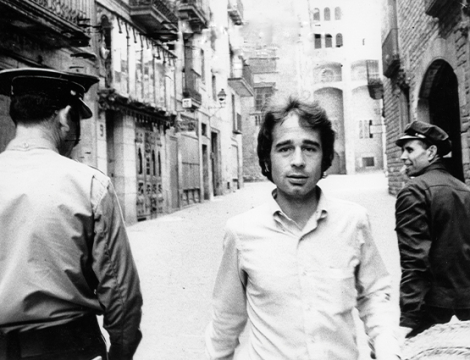 Ovidi Montllor in Plaça del Rei in 1969. © Pilar Aymerich
Ovidi Montllor in Plaça del Rei in 1969. © Pilar AymerichIt is in the book’s chapter on portraits that we can admire the author’s skill in capturing the unexplored facets of the subject of the image. In Aymerich’s face-to-face interaction with the subjects she portrays, aside from the technical precision with which she plays with light and focus to offer optimum definition, an intuition can be discerned that grasps the essence of the person before her. And this is how she challenges the passive spectators and invites us to ascertain what that expression, that smile or that scene tells us about the character.
The photographer
The life and oeuvre of Pilar Aymerich are displayed in a carousel in the pages of this book. It encompasses nearly thirty years of intense experiences and a passionate love for the city and its inhabitants. We can follow her life story (as long as we fit the pieces together) as a child from the district of El Carmel who took flight following her theatrical training at the Adrià Gual school of drama, where she met Montserrat Roig and was taught by Maria Aurèlia Capmany and Ricard Salvat; her return to Barcelona from London and Paris, and the beginnings of her journalistic work with Roig.
From that time, still in the grip of Franco’s dictatorship, we find her affiliations to feminism and left-wing protest movements, and she reaffirms her genuine interest in culture and her love for the theatre and for the city. The book also offers hints of her cultural points of reference, authors who, from different disciplines, such as playwriting, poetry, painting, politics and journalism, have increasingly found a place of refuge in the author’s spirit.
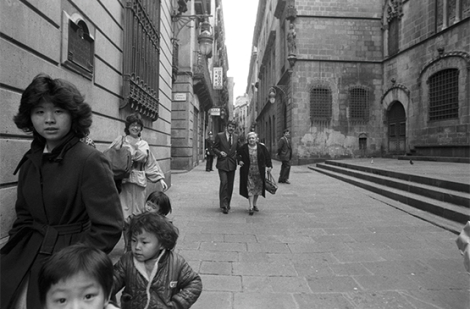 Pasqual Maragall and Maria Aurèlia Capmany strolling through the Gothic quarter in 1982. © Pilar Aymerich
Pasqual Maragall and Maria Aurèlia Capmany strolling through the Gothic quarter in 1982. © Pilar AymerichThe book affords a glimpse into what the photographer observed through her eyes, as well as an insight into her circumstances, because Aymerich reveals to us in this book what is never explained about creation itself. In some cases, the author discloses her reflections before and after the act of taking the photograph; while in others, she explains the impressions stirred by a certain environment, the emotions that a character arouses in her, and she even confesses the strategies she employs to achieve a particular frame or to catch the ideal light.
The book is filled with stories that now seem impossible to us, because of how regulated coexistence has become and how impassive we citizens have become. But, thanks to the keen eye and sensitivity of Pilar Aymerich, the past makes its presence felt to us and those events return to us now in this book, to bear witness to what we once were and to what we once did. And to demonstrate to those who did not live through it that we can, as Aymerich asserts, “stage the revolution with joy”.
La Barcelona de Pilar Aymerich
Pilar Aymerich
Barcelona City Council and Editorial Comanegra, 2023.
‘Darrere la Càmera’ Collection.
230 pages
The newsletter
Subscribe to our newsletter to keep up to date with Barcelona Metròpolis' new developments



